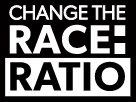Becoming ‘race fluent’: Guidance for Business Leaders
Anecdotal evidence collected from engagements with over 600 leaders, by Professor Doyin Atewologun CEO and Founder of Delta, who over recent years identified that the key reason leaders hold back in making progress in race equity is “the fear of making inappropriate statements or being labelled racist”. Thus, language is frequently perceived as a barrier to action.
If senior leaders are able to speak visibly, and with conviction about ‘race’ and why it matters to business, companies are likely to make quicker progress towards increasing representation. We believe that, as we continue to reduce disparities in executive and Board level representation for individuals from racial or ethnic minority backgrounds, business leaders will also benefit from support in building their confidence and fluency in talking about ethnicity and ‘race’. There is a barrier to action; many leaders would benefit from dispelling their fear of making mistakes.
Some guidance on terminology
Recognising the evolving nature of language associated with race, we would want to avoid setting out a list of ‘what to say and what not to say’. However, language does matter, as words we use can carry and perpetuate implicit stereotypical or even supremacist assumptions embedded in our cultures. While offering guidance for common terms related to ethnic heritage, we also want to invite a sense of curiosity in readers to delve more deeply into understanding why certain labels we can sometimes mindlessly use to classify people can be experienced as offensive by those to whom the term has historically been directed.
Breaking down ‘BAME’
In the contemporary global business landscape, addressing racial identities requires a nuanced understanding of terminology. For UK-based firms, the commonly used abbreviation from around the early 2000s for minority ethnic professionals has been ‘BAME’ (Black, Asian & Minority Ethnic). In the UK now, there is a general move away from using this acronym due to its homogenising assumptions. Such assumptions include a presumption of shared identities and experiences across swathes of the population, and a belief in uniform societal inequalities, belying diverse challenges, barriers and stereotypes. Research indicates that many individuals from ethnic minority backgrounds do not identify with this term. This emphasises the need for caution in its usage.
We recommend that leaders are as specific as they can be when referencing diverse ethnic groups. In both written and verbal communications, if you do need to use the term 'BAME,' spell out the acronym before its use to promote clarity and understanding. Refrain from using 'BAME' as an adjective (e.g. ‘BAME people’).
The term 'Black' is not a word to be avoided, and typically serves as an inclusive identifier for individuals of sub-Saharan African descent. Historically, in the UK, the positive reclamation of the term 'Black' from the 1960s transformed it into a political descriptor, uniting individuals who had experienced racial discrimination based on skin colour (thus including Pakistani, Bangladeshi, Indian and other immigrant communities in the UK). This is less prevalent today. However, it remains crucial to recognise that people who identify as 'Black' may see themselves as belonging to the African and African Caribbean community while also embracing divergent religious, national and cultural affiliations.
In regions across the globe, there are additional historical and contextual considerations. For example, in South Africa and other southern African countries, where the legacies of apartheid persist, the terms 'Black' and ‘Coloured’ hold specific cultural meaning and weight. In contrast, in the United States and Canada, the term 'Black' unifies individuals who are descendants of enslaved people taken from Africa. In Europe including the UK, 'Black' encompasses individuals of African descent many from former colonies and relatively more recent migrant communities (compared to the Americas). Further, Black communities with African ancestry in Central and South America (e.g. in countries like Brazil and Colombia) do not share a Western/Anglo context like their Northern American and European counterparts, thus their identities, worldviews and experiences may have more in common with other ethnic groups from the Global South.
Asian
Similarly, we would apply this lens to point out the inadequacy of the term 'Asian,'. Its broad usage obscures the rich tapestry of social, geographical, cultural, and religious differences for individuals with ethnic origins traced across the Indian sub-continent to Eastern Asia. East Asia includes countries like China, Japan, and South Korea, while Southeast Asia encompasses nations such as Thailand, Vietnam, and Indonesia. South Asia includes countries like India, Pakistan, and Bangladesh, and Central Asia includes nations like Kazakhstan, Uzbekistan, and Kyrgyzstan. To foster meaningful communication, leaders might do best by referencing each distinct group separately, e.g. Bangladeshi, Chinese, Indian or Pakistani, etc.
Latino/Latina/Latinx
Business leaders who have worked predominantly in Europe may find that they conflate Latin American identifiers with the descriptor ‘Hispanic’. 'Hispanic' broadly encompasses individuals with Spanish-speaking heritage, irrespective of race. 'Latina' and 'Latino' specifically refer to female and male individuals of Latin American descent, respectively.
Thus, ‘Hispanic’ relative to ‘Latin American’ may be seen primarily as a linguistic term, encompassing people who speak Spanish and share cultural ties to Spain (e.g. citizens of Argentina and Mexico), while ‘Latin American’ is a broader term that includes people of various racial and ethnic backgrounds who share cultural ties to the region of Latin America (including Portuguese-speaking Brazil and Haiti, a former French colony).
Terminology continues to evolve, and careful consideration is essential to promote inclusivity. The terms 'Latina' and 'Latino' traditionally denote gender-specific identifiers. However, acknowledging the need for gender neutrality and non-binary identities, the term 'Latinx' has emerged. While 'Latinx' is gaining acceptance, it is vital to recognise that individuals may have varied preferences.
General
Leaders would do well to respond to the preferences of individuals on how they wish to be identified. These preferences may emerge from the evolving nature of language and cultural identifiers within diverse communities. As language evolves, staying attuned to individual preferences allowing for self-identification and adapting communication accordingly contributes to an atmosphere of respect and understanding, fostering inclusion and belonging. This will help to build and retain a strong diverse talent pipeline.
Guidance for Business Leaders: When to use or not use various words
Above all, context matters. Context covers history and the current times – including the range of communities represented in your business, the proportions relative to each other and the total population, and how each of these individuals chooses to self-identify.
- In private and one-to-one contexts, prioritise individual preferences. If it is pertinent to the conversation (such as where you are unsure and you want to understand a person’s lived experience), enquire directly how an individual would prefer to be identified rather than evading the topic.
- In public, large group social contexts (e.g. in a townhall with a diverse audience), acknowledge that language matters but that preferred terminology varies and that your preferred terms may not ring true to everyone in the audience. State what terminology you are opting to use and explain why (e.g. “this is the terminology that, following consultation, HR /our ERGS have recommended”).
- In formal, written contexts e.g. published or Annual reports, you may opt to use more standardised approaches such as the UK ONS (Office of National Statistics) categories.
As a general principle, we advise business leaders to stay updated about evolving language preferences and cultural sensitivities in their local context so that they are not deemed out of touch with contemporary thinking. You may want to introduce a formal process to support you in this (e.g. asking HR/your D&I team to consult, and agree, on terminology with your ERG leads periodically). Leaders are reminded to seek expert guidance, avoiding placing the burden on minority employees (unless you are in a professional relationship such as mentoring or sponsorship in which such questions are encouraged).
Business leaders may also find it useful to ask the most sensitive questions and grapple with the thorniest issues in conversations with executive coaches with expertise in equity and inclusion. They also might find it valuable to discuss nomenclature with reciprocal/reverse mentors, or with other similarly-placed contemporaries (e.g. their White, male, senior peers). Additionally, many business leaders gain guidance from internal experts (e.g. Chief Diversity Officers) or external consultants for guidance on appropriate terminology in their context.
Overall, rather than looking for a strict list of ‘right’ and ‘wrong’ terminology, we urge business leaders to embrace a growth mindset when discussing ‘race’. A growth mindset means accepting uncertainties and mistakes as learning opportunities, asking thoughtful questions, and being open to correction. While language is important, it should not overshadow meaningful action.
This guide also features in the 2024 Parker Review available here.
Some of the core ideas discussed here originate from an earlier article, "Race Fluency: Getting the language right” (2021) by Dr. Doyin Atewologun, Dr. Fatima Tresh and Dr Joy Warmington, retrievable here
Contact Doyin with any questions or support on developing your race fluency
Dr. Doyin Atewologun


